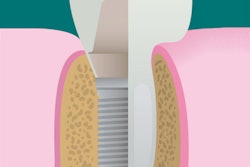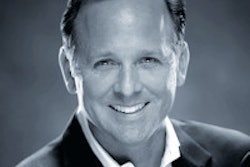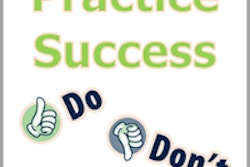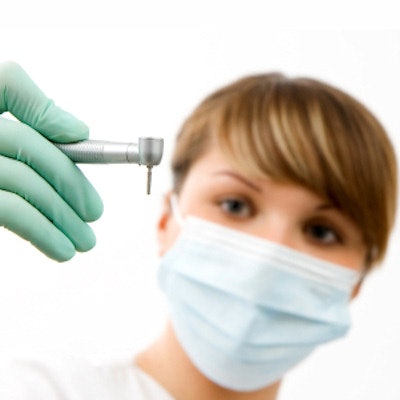
The dentist says, "You have MODBL caries on #19, and we need an e.max onlay."
 Brad Guyton, DDS, MBA, MPH.
Brad Guyton, DDS, MBA, MPH.The patient thinks, "I feel stupid, this sounds expensive, and what the heck is a mod-bull?"
Ever say one thing and someone hears something completely differently? It happens to all of us -- and it happens often. It is tough enough when we say it to family or team members who know we probably did not mean to talk over their head. It is much worse when we say it to patients and they walk away feeling not cared for, ripped off, or discouraged.
Miscommunication can impact trust, case acceptance, and patient return-for-care visits. Recently, a number of us sat down together to reflect on the top five things dentists tend to say and what patients really think when they hear it.
1. "What I want to do today ..."
Doctors typically want to be clear and concise by telling the patient exactly what needs to be done. For example, we may say, "What I want to do today is remove the decay and place a crown on that tooth."
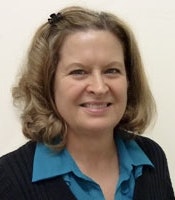 Valerie Kendrick, MBA.
Valerie Kendrick, MBA.However, the patient may think, "I don't really care what you want to do." Instead, tell me what I need and if I really need it now."
Patients feel empowered with choice. We accomplish this by asking our patients a question every step of the way. This helps them to feel part of the process.
"There is extensive decay on that back left tooth that is causing it to weaken, and it is at risk of fracture. Does this concern you?" If the answer is yes, then respond with "Then I suggest we move forward today to avoid that consequence."
2. "If it were my mouth ..."
Ever get frustrated when you go to a restaurant, ask what the waiter recommends, and the waiter responds with the most expensive item on the menu?
We may think that we are helping our patients make an informed decision by letting them know that we would choose a specific treatment option if we were in the chair. However, the patient may hear, "Blah, blah, upsell, upsell," or think, "Sure, you would do the most expensive thing, because you make a lot of money."
People will typically choose the option that other people "like them" have done. By saying, "Patients of mine with this condition have typically chosen this option," patients may find this more relatable and be more likely to move forward with the recommendation.
3. "If you don't take care of this ..."
We want our patients to receive the best dental care possible and understand the potential consequences of delaying treatment. However, patients may perceive this as a scare tactic or think, "Why is my dentist telling me I am terrible at taking care of my teeth?"
To avoid coming across like we're scolding our patients, consider rephrasing the statement: "When left untreated, patients of mine have experienced pain, and, in some cases, even lost the tooth. Does this concern you?"
4. "We can probably do ..."
One of the most important aspects of the doctor-patient relationship is trust. Patients trust doctors who show that they care about their patients and also demonstrate confidence. If the doctor says, "We can probably do a crown," the patient may think, "If this doctor isn't sure, I don't want this person working on my teeth."
We should set realistic expectations but in a way that builds confidence with patients. Look at yourself in the mirror and ask, "Am I the best dentist to do the dentistry I diagnose?" If you can't answer yes, then what do you think your patients are thinking when they read your face, responses, and body language?
5. "You have a little bit of ..."
When we say, "You have a very small cavity" or "You have a slight gum infection," our intention is usually to help soften the blow for patients. However, it usually has the opposite effect.
They think, "It doesn't sound too serious, so I will just wait to take care of it." We do not want to scare or alarm patients, but we need to help them understand urgency and the consequences of delaying treatment, especially if it might require more complex or expensive treatment as the condition progresses. Often the "wait and watch" may turn out to be the "wait and we need do more expensive dentistry later."
So what should the dentist say?
"I am concerned about extensive decay I see on your back left tooth. It has weakened the tooth, and it is now at risk for fracture. When this happens to my other patients, they choose to restore it quickly with a strong, tooth-like restoration. Does this concern you? How would you like to proceed?"
Our words have a great deal of power, and we must be sure we're always sending the right message to our patients. Often the slightest change in language can prevent misperceptions and help patients hear the message intended. Let's all connect with our patients through effective communication and build on that connection over time to create patients for life.
Brad Guyton DDS, MBA, MPH, is in private practice in Denver. He serves as vice president of clinician development and dean of the Pacific Dental Services Institute and is an associate professor at the University of Colorado School of Dental Medicine. He can be reached at [email protected].
Valerie Kendrick, MBA, serves as a performance development coach for Pacific Dental Services. She can be reached at [email protected].
The comments and observations expressed herein do not necessarily reflect the opinions of DrBicuspid.com, nor should they be construed as an endorsement or admonishment of any particular idea, vendor, or organization.




